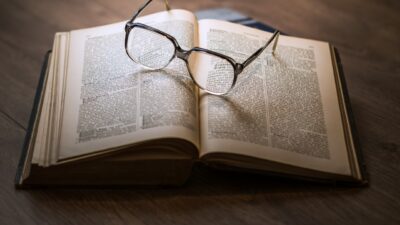Key manifestations of Holocaust distortion
Objectives:
- To familiarize participants with the main forms of manifestation of Holocaust distortion
- To engage participants in exploring concrete examples of Holocaust distortion encountered online and offline
- To increase participants’ critical understanding of different forms of manifestation of Holocaust distortion
Number of participants: 5–30
Duration: 90 minutes
Description of the activity:
- The participants are invited to watch again this 12-minute explanatory video of Holocaust distortion published by IHRA in 2021. This time, their task is to write down the different examples of Holocaust distortion presented in the video:
2. After watching the video, the trainer informs the participants that they will work in groups to discuss manifestations of Holocaust distortion. They will express their opinions and comments first in small groups and then in plenary. However, if they have any questions of clarification about what was presented in the video, they are invited to ask them now.
3. The participants are divided in groups of 4–5 people. The composition of the groups should be different from the groups in the first activity (in order to ensure that more examples can be shared). Each participant receives a copy of the Handout – Key forms of manifestation of Holocaust distortion.1 The task of each group is to look at the examples of Holocaust distortion – those identified in the video and those discussed during the group work in the previous activity – and identify the categories under which they fall (based on the information presented in the handout).
4. Each group is invited to present in the plenary the key points of the group discussion. After the first group presents, the following groups are asked to add only what was not already mentioned or to express a different point of view, if the case (for example if they consider that a certain manifestation of Holocaust distortion should be included in a different category). The trainer should check with the participants if they need clarification about any of the points mentioned in the handout and give more examples if not enough are coming from the group or from the other participants.2
5. After all the groups have presented, the trainer conducts a debriefing discussion based on the following questions:
- Did any of the examples presented in the video or by the colleagues surprise you? In what way?
- Who are the different entities that are engaging in Holocaust distortion?
- What are the intentions of those who are engaging in different forms of Holocaust distortion?
- Do you think that most people who are engaging in Holocaust distortion do it on purpose or out of ignorance?
- What is, in your opinion, the impact of Holocaust distortion upon our society? You can refer to Holocaust survivors and their descendants, Jewish communities, policymakers and government officials, historians, experts and journalists, museums and memorials, teachers, young people, regular citizens and even the people who are distorting the Holocaust themselves.
6. The trainer concludes by thanking the participants for their active engagement and by summarizing that Holocaust distortion has a strong impact on society by spreading antisemitism, prohibiting constructive efforts to acknowledge and address legacies of the Holocaust – including the responsibility of perpetrators in different countries – by contributing to distrust in science and democratic debate and to a generalized erosion of trust, knowledge and respect for truth.
1 The handouts are based on Understanding Holocaust Distortion: Contexts, Influences and Examples, published by IHRA in 2021 and on History under attack: Holocaust denial and distortion on social media, published by the UN and UNESCO in 2022.
2 Examples of Holocaust distortion are available in ANNEX (annex is currently work in progress)
Materials
lesson plan
Training Outline
reading
Key forms of manifestation of Holocaust Distortion
On this Topic
Lessons for
Topic
Number of participants:
Average Duration of Lesson:

